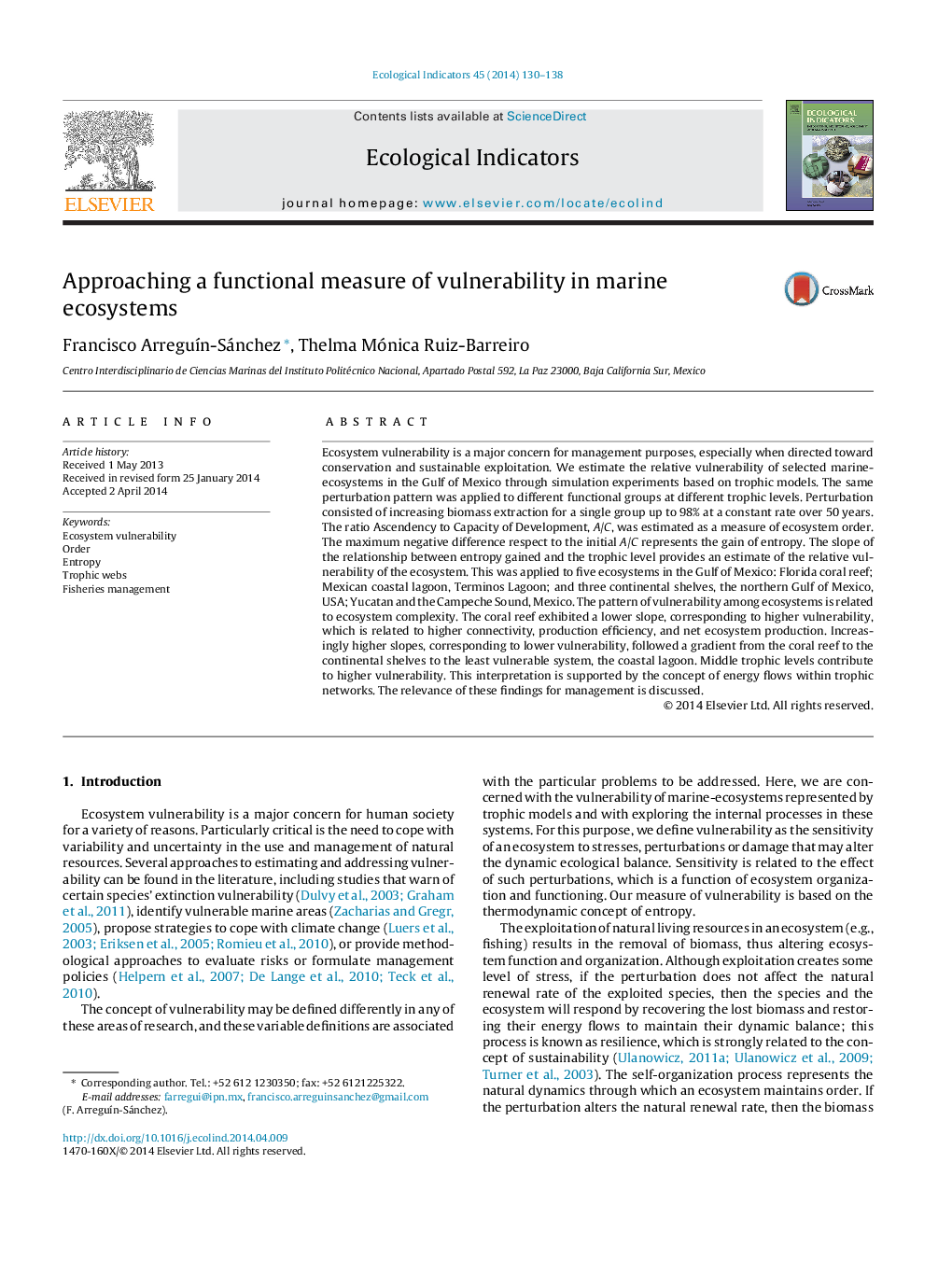| Article ID | Journal | Published Year | Pages | File Type |
|---|---|---|---|---|
| 4373053 | Ecological Indicators | 2014 | 9 Pages |
Abstract
Ecosystem vulnerability is a major concern for management purposes, especially when directed toward conservation and sustainable exploitation. We estimate the relative vulnerability of selected marine-ecosystems in the Gulf of Mexico through simulation experiments based on trophic models. The same perturbation pattern was applied to different functional groups at different trophic levels. Perturbation consisted of increasing biomass extraction for a single group up to 98% at a constant rate over 50 years. The ratio Ascendency to Capacity of Development, A/C, was estimated as a measure of ecosystem order. The maximum negative difference respect to the initial A/C represents the gain of entropy. The slope of the relationship between entropy gained and the trophic level provides an estimate of the relative vulnerability of the ecosystem. This was applied to five ecosystems in the Gulf of Mexico: Florida coral reef; Mexican coastal lagoon, Terminos Lagoon; and three continental shelves, the northern Gulf of Mexico, USA; Yucatan and the Campeche Sound, Mexico. The pattern of vulnerability among ecosystems is related to ecosystem complexity. The coral reef exhibited a lower slope, corresponding to higher vulnerability, which is related to higher connectivity, production efficiency, and net ecosystem production. Increasingly higher slopes, corresponding to lower vulnerability, followed a gradient from the coral reef to the continental shelves to the least vulnerable system, the coastal lagoon. Middle trophic levels contribute to higher vulnerability. This interpretation is supported by the concept of energy flows within trophic networks. The relevance of these findings for management is discussed.
Related Topics
Life Sciences
Agricultural and Biological Sciences
Ecology, Evolution, Behavior and Systematics
Authors
Francisco ArreguÃn-Sánchez, Thelma Mónica Ruiz-Barreiro,
